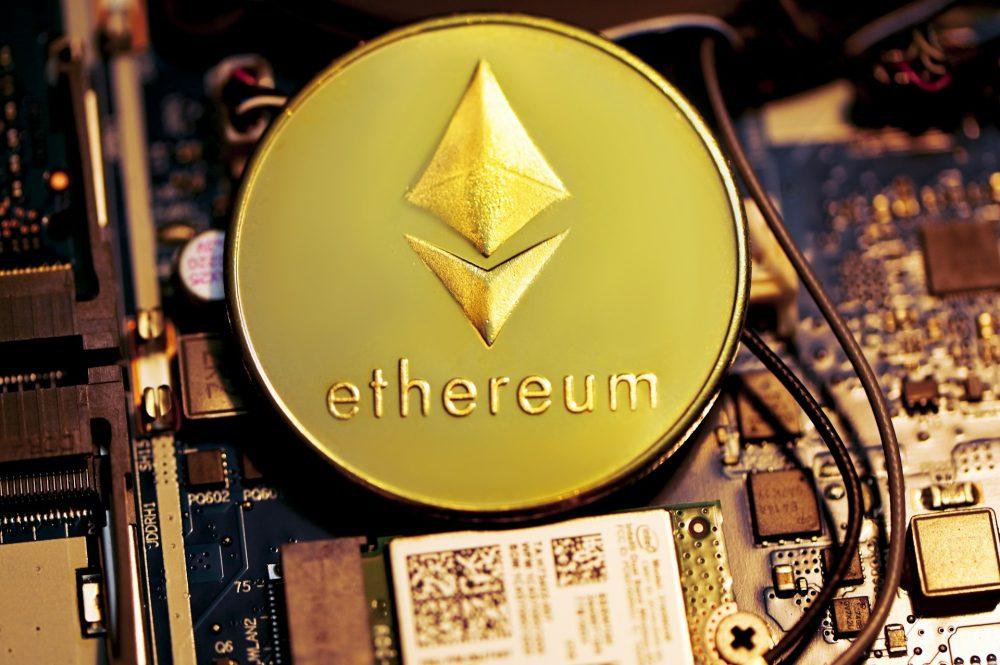The Ethereum Network is far more than just a cryptocurrency platform, it is the beating heart of the decentralized web. Launched in 2015 by Vitalik Buterin and a team of co-founders, Ethereum introduced a revolutionary concept: smart contracts, self-executing agreements that operate on a blockchain. Since then, Ethereum has grown into a global ecosystem supporting thousands of decentralized applications (dApps), powering decentralized finance (DeFi), NFTs, gaming protocols, and more.
While Bitcoin was designed to be a store of value and digital currency, Ethereum is a programmable blockchain, providing the infrastructure for building decentralized applications across industries. It currently processes over 1 million transactions per day and is home to more than 3,000 dApps. With its recent transition from Proof of Work (PoW) to Proof of Stake (PoS) via Ethereum 2.0, the network has significantly improved scalability and sustainability.
In this article, we’ll explore the architecture of the Ethereum Network, its unique features, use cases, benefits, limitations, and why it remains a cornerstone for blockchain innovation.
Understanding the Ethereum Architecture
Smart Contracts
Smart contracts are pieces of code that automatically execute when predefined conditions are met. They run on the Ethereum Virtual Machine (EVM), ensuring trustless transactions without intermediaries.
Examples:
- Uniswap: Decentralized exchange enabling peer-to-peer token swaps.
- Aave: Lending/borrowing platform using collateralized loans.
- OpenSea: Marketplace for non-fungible tokens (NFTs).
The Ethereum Virtual Machine (EVM)
The EVM is a global, decentralized computer that executes smart contracts. It provides compatibility across all Ethereum-based projects, making it easier for developers to build interoperable apps.
Ether (ETH) – The Native Token
ETH is used to:
- Pay for gas fees (transaction costs)
- Stake in the PoS mechanism
- Act as collateral in DeFi applications
Ethereum Use Cases and Real-World Applications
Decentralized Finance (DeFi)
Ethereum has revolutionized finance by eliminating intermediaries. In 2023, the total value locked (TVL) in DeFi protocols on Ethereum exceeded $50 billion.
NFTs and Digital Ownership
Ethereum is the primary network for NFTs. Projects like CryptoPunks and Bored Ape Yacht Club have generated hundreds of millions in secondary market sales.
DAOs – Decentralized Autonomous Organizations
DAOs enable decentralized governance. Members use tokens to vote on proposals, budgets, and roadmaps. Examples include MakerDAO and Aragon.
Tokenization and Real-World Assets
Ethereum enables the tokenization of real estate, art, and commodities, making them tradable and accessible globally.
Platforms like fluxquant engine even integrate Ethereum-based tokens into automated trading strategies, allowing traders to capitalize on DeFi and ERC-20 token price movements efficiently.
Advantages of the Ethereum Network
- First-mover advantage: Largest dApp and developer community
- Smart contract functionality: Robust and flexible code execution
- Security and decentralization: Supported by thousands of validators globally
- Composability: Projects can interact and build on each other easily
- Strong ecosystem: DeFi, NFTs, DAOs, and more all converge on Ethereum
Challenges and Limitations
- High Gas Fees: During peak usage, transaction fees can become prohibitively expensive.
- Scalability Issues: Although Ethereum 2.0 has improved throughput, full implementation is still in progress.
- Network Congestion: Popular dApps can overwhelm the system.
- Security Risks: Bugs in smart contracts can lead to exploits and financial loss.
The Shift to Ethereum 2.0 and Proof of Stake
In September 2022, Ethereum completed “The Merge”, transitioning from energy-intensive PoW to PoS. This reduced energy consumption by over 99.95% and paved the way for sharding, which is expected to dramatically increase scalability.
This transition has also enhanced Ethereum’s appeal to environmentally conscious investors and projects.
Ethereum and Trading
Ethereum’s versatility makes it highly attractive to both retail and institutional traders. ETH’s volatility and liquidity present numerous trading opportunities, including:
- ETH/BTC pair trading
- Yield farming and liquidity mining
- Arbitrage between decentralized and centralized exchanges
- Trading synthetic assets and tokens built on Ethereum
Platforms like fluxquant engine are now incorporating Ethereum-based assets into automated trading algorithms, enabling advanced data analysis and rapid execution that traditional manual trading cannot match.
Frequently Asked Questions (FAQ)
What is the difference between Ethereum and Bitcoin?
Bitcoin is a digital store of value, whereas Ethereum is a decentralized computing platform for running smart contracts and dApps.
How does Ethereum generate value?
Value comes from network utility, demand for ETH to pay gas fees, staking rewards, and the vast ecosystem of applications and tokens built on it.
Is Ethereum secure?
Yes, Ethereum is one of the most secure blockchains, with over 500,000 validators and a robust track record against network-level attacks.
What is a gas fee?
Gas is the fee paid in ETH to execute a transaction or smart contract. Prices vary based on network congestion.
Can Ethereum handle mass adoption?
Scalability is improving with Ethereum 2.0 and layer 2 solutions like Arbitrum and Optimism, aiming to support millions of users.
What are Layer 2 solutions?
They are secondary frameworks built on Ethereum to increase speed and reduce costs, examples include Polygon, zkSync, and Optimism.
What is staking on Ethereum?
Staking involves locking up ETH to help validate transactions on the PoS network in exchange for rewards, currently averaging 4-6% APY.
Are there risks with Ethereum smart contracts?
Yes. Poorly written contracts may have vulnerabilities. Audits and best practices reduce these risks significantly.
How can I trade Ethereum efficiently?
Using trading platforms like fluxquant engine, which automate strategies, manage risk, and optimize execution.
What is the future of Ethereum?
Ethereum continues to lead in innovation, with planned upgrades like proto-danksharding and increasing institutional adoption pointing to a strong future.
Conclusion
Ethereum has matured from a niche blockchain experiment into a global infrastructure layer for decentralized applications. Its vast ecosystem, developer community, and real-world utility have solidified its position as the foundational layer of Web3.
Despite challenges related to scalability and cost, ongoing upgrades, including Ethereum 2.0 and Layer 2 rollups, signal a more efficient and inclusive future. Whether you’re a developer, investor, or trader, Ethereum provides a robust platform to innovate, build, and grow.
Moreover, for those interested in leveraging Ethereum’s market movements, tools like fluxquant engine allow for intelligent trading, risk mitigation, and automation—an edge in the ever-evolving crypto landscape.
Ethereum is not just a currency, it’s an ecosystem, and understanding its inner workings is key to thriving in the world of decentralized finance and blockchain technology.




